Potřebujeme váš souhlas k využití jednotlivých dat, aby se vám mimo jiné mohly ukazovat informace týkající se vašich zájmů. Souhlas udělíte kliknutím na tlačítko „OK“.
ASTM D5873-14
Standard Test Method for Determination of Rock Hardness by Rebound Hammer Method (Withdrawn 2023)
Automaticky přeložený název:
Standardní zkušební metoda pro stanovení Rock tvrdosti Rebound Hammer metodou
NORMA vydána dne 1.2.2014
Informace o normě:
Označení normy: ASTM D5873-14
Poznámka: NEPLATNÁ
Datum vydání normy: 1.2.2014
Kód zboží: NS-32907
Počet stran: 6
Přibližná hmotnost: 18 g (0.04 liber)
Země: Americká technická norma
Kategorie: Technické normy ASTM
Kategorie - podobné normy:
Anotace textu normy ASTM D5873-14 :
Keywords:
core, hardness, impact hammer, rebound hammer, rebound number, rock mass, unconfined compressive strength, ICS Number Code 13.080.20 (Physical properties of soil)
Doplňující informace
| Significance and Use | ||||||||||||||||
|
4.1 The rebound hardness method provides a means for rapid classification of the hardness of rock during site characterization for engineering, design, and construction purposes, geotechnical mapping of large underground openings in rock, see Guide D4879, or reporting the physical description of rock core, see Practice D4543. 4.2 The rebound hardness number, HR, can serve in a variety of engineering applications that require characterization of rock material. These applications include, for examples, the prediction of penetration rates for tunnel boring machines, determination of rock quality for construction purposes, grouping of test specimens, and prediction of hydraulic erodibility of rock. 4.3 This test method is of limited use on very soft rock or very hard rock, which is defined as having uniaxial compressive strengths less than approximately 1 MPa or greater than 100 MPa. 4.4 The results of this test method are not intended for conversion to strength data suitable for design. 1.1 This test method covers the
testing apparatus, sampling, test specimen preparation, and testing
procedures for determining the rebound hardness number of rock
material using a spring-driven steel hammer, referred to variously
as a rebound hammer, impact test hammer, or concrete test
hammer.
1.2 This test method is best suited for rock material with uniaxial compressive strengths ranging between approximately 1 and 100 MPa. Test Method D7012 provides more information on compressive strength of rock. 1.3 The portable testing apparatus may be used in the laboratory or field to provide a means of rapid assessment of rock hardness or to serve as an indicator of rock hardness. 1.4 Rebound hammers are available from their original manufacturers in several different energy ranges. For a given plunger tip diameter and radius of curvature, the impact energy of the rebound hammer determines its range of applicability. Accordingly, this limitation should be kept in mind when selecting a hammer type. Earlier recommendations for rock mechanics applications were only for hammers with an impact energy of 0.735 N·m, especially on smaller core samples and weaker rocks (see also Brown 19811.5 Rocks exhibiting vesicular texture may be beyond the scope of this test. Care should be taken when testing such rocks and conglomerates as the rebound values will vary between testing a large piece of aggregate versus softer matrix of the conglomerate. 1.6 All observed and calculated values shall conform to the guidelines for significant digits and rounding established in Practice D6026. 1.6.1 The procedures used to specify how data are collected/recorded or calculated, in this standard are regarded as the industry standard. In addition, they are representative of the significant digits that generally should be retained. The procedures used do not consider material variation, purpose for obtaining the data, special purpose studies, or any considerations for the user’s objectives; and it is common practice to increase or reduce significant digits of reported data to be commensurate with these considerations. It is beyond the scope of this standard to consider significant digits used in analytical methods for engineering design. 1.7 For determining the rebound number of concrete, see Test Method C805/C805M. 1.8 Units—The values stated in SI units are to be regarded as standard. No other units of measurement are included in this standard. 1.9 This standard does not purport to address all of the safety concerns, if any, associated with its use. It is the responsibility of the user of this standard to establish appropriate safety and health practices and determine the applicability of regulatory limitations prior to use. |
||||||||||||||||
| 2. Referenced Documents | ||||||||||||||||
|
Podobné normy:
Historická
1.11.2008
Historická
15.5.2010
Historická
1.11.2011
Historická
1.2.2013
Historická
1.10.2009
Historická
1.5.2013


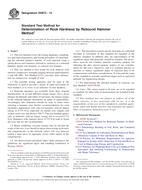
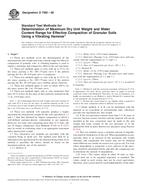 ASTM D7382-08
ASTM D7382-08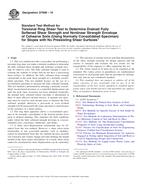 ASTM D7608-10
ASTM D7608-10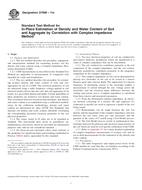 ASTM D7698-11a
ASTM D7698-11a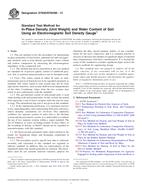 ASTM D7830/D7830M-13..
ASTM D7830/D7830M-13..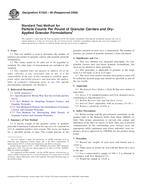 ASTM E1520-99(2009)..
ASTM E1520-99(2009).. ASTM F3013-13
ASTM F3013-13
 Cookies
Cookies
